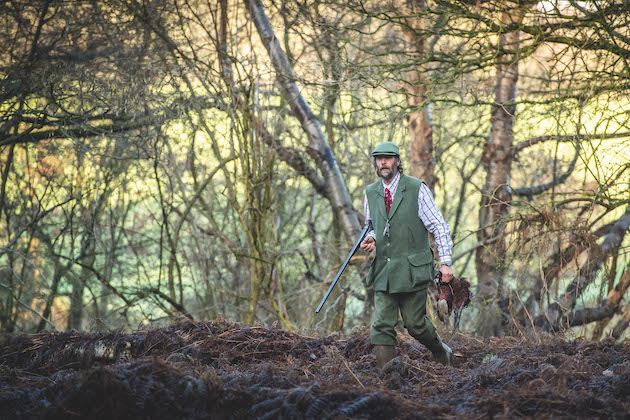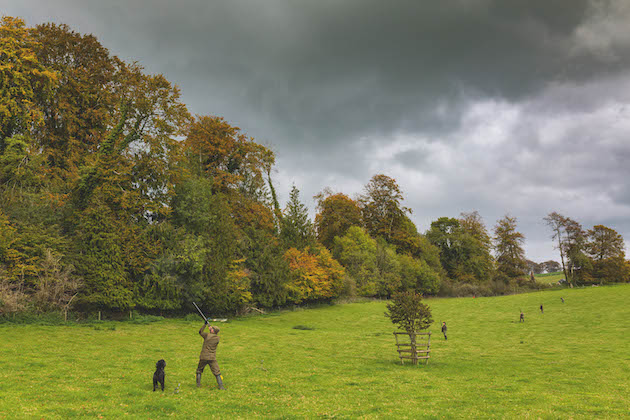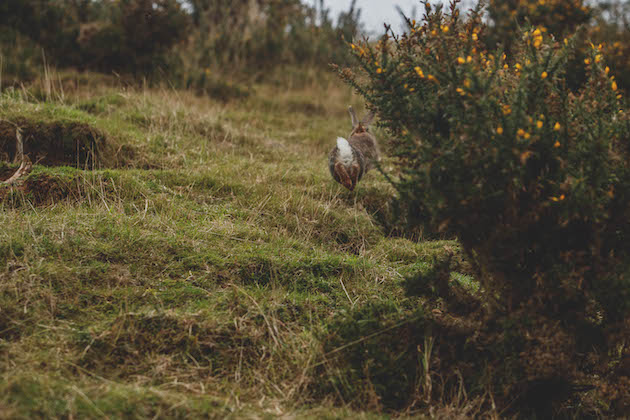Win CENS ProFlex DX5 earplugs worth £1,149 – enter here
Ground game: should we be allowed to shoot it on driven days?
 Rob Swift
Usd 2 sept 20 rough shooting
Rob Swift
Usd 2 sept 20 rough shooting
The morning briefings on the driven shoots to which I get invited tend to follow the same pattern. “Shoot what gives you pleasure, but be sparing with the hens — they are our breeding stock. Leave woodcock and grey partridges and no ground game.”
It’s not a difficult set of rules to follow. Wild bird shoots rely upon having sufficient breeding hens going into the spring, therefore by greedily shooting a low hen you are also, in effect, shooting next season’s sport in the foot too. If both woodcock and grey partridge are off the quarry list, it is usually because your host is aware of the fragility of numbers locally.
Then we come to the final command. Clearly, driven ground game used to be considered fair game. Therefore, is the abstention diktat today due to preservation, as in the case of hen pheasants, woodcock and grey partridges? Or are there too many ‘unsafe cowboys’ about to risk shooting low? Having spoken with some of the finest and oldest hands in game shooting, it appears that the reality is something quite different and ground game rules have changed. (Read how to safely shoot ground game.)

Today, pickers-up on driven days stand quite close to the Guns, making the idea of shooting low and behind unthinkable
Rabbit numbers
The humble coney was once a staple quarry for all in the countryside; be it coursed, ferreted, trapped, snared, netted, lamped, shot or stalked, the rabbit filled bellies. In 1895, the average price for one at market was between 11d and 1s 2d, which made them an important source of income for estates, a state of affairs that lasted well into the 20th century. The rabbit was too financially important to ‘waste’ by including it as an integral part of a formal day’s shooting. Even on driven days of old in East Anglia, the rabbit only played a bit part — and rarely, if ever, for standing Guns, according to former headkeeper Richard Gould. He reminisces that up until the mid-1990s, when higher-density reared game truly took over, rabbits were shot by walking Guns placed in the beating line. Surrounding areas of scrub, heath and cover were blanked-in towards a main block to concentrate game and create a drive. These walking Guns could shoot rabbits as they broke forward, or any cocks breaking back.
Shooting wild game works on a larger landscape scale than its reared counterpart. As Richard says: “Creating a drive takes a lot of time with wild game — we had to find something for the Guns to do, so we had them walk in the line with us.” Therefore, with the ever-increasing dominance of intensive reared shooting, the need to blank-in large tracts of land became redundant. As another long-standing Suffolk keeper noted: “Guns today rarely take much of an active part in operations. They walk to their pegs, or in some ‘smart’ places are deposited by a shiny bus.”
Such is the change in shooting today. Rather than blanking-in, creating a drive and enjoying some sport on rabbits in the process, the modern Gun merely has to stand at his peg and wait for a few minutes before guaranteed game arrives over his head. The rabbit is not a creature that bolts out of cover and into the middle of a field towards a line of waiting Guns — therefore, unless there is a walking line, the chances of shooting a rabbit, even if it were allowed, are slim at best. Of course, rabbits are so rarely shot these days as there aren’t many about. The ravages of myxomatosis and viral haemorrhagic disease 1 and 2, has caused a 60% drop in the English rabbit population since 1995 — and in Scotland by an estimated 80%. In 2021, if rabbits aren’t there, they will not feature in a driven day’s bag and it appears that they never really did.
Hares were once a staple on driven days, but today they are almost never shot
Hare issue
Hares were a staple on driven days, particularly when the grey partridge was king. The bag return for the Sandringham Estate in season 1960-61 reveals that 16,188 pheasants were shot, 6,023 partridges and 809 hares. Despite huge numbers on the estate, rabbits numbered a paltry 127. On partridge shoots, Guns were placed close to a thick hedgerow in a straight line, ready to shoot birds in front as they cleared the hedge-top.
Guns then turned on their heel to take a low going-away shot with their second barrel. This meant that hares, bolting before the beaters through the hedge and then flushing through the line, could also be shot behind too, with some modicum of safety. Pickers-up were in little danger of being peppered — on traditional partridge shoots they were placed a long way back. Though loads were light, Guns stood closer together, so a hare faced a somewhat intensive broadside.
This sort of shooting has all but gone. The manner in which Guns are placed today for driven pheasants and French partridges has made the idea of shooting low and behind anathema, even if a hare should break through the line. Alternatively, hares that break in front and run parallel to the Guns present a dangerous low forward shot. If a safe shot does present itself on the flank, most Guns continue to use lighter game loads. For most lowland game, 28g of No 6 is perfect, but it is woefully underpowered to guarantee killing a hare. There is no worse crime than undergunning your quarry and no picker-up will thank you for presenting them with the invidious task of putting their dog on to a wounded hare. Hare numbers have also fallen. According to the GWCT, while numbers are recovering from the record lows of the early 1990s, populations tend to be localised. On farms and estates where high or over-population is a reality, walked- up hare drives are a better option.
I asked Adam Steed, an award-winning Suffolk wild bird keeper, why he thought hares were no longer part of the bag. “The day is set up to work for pheasant shooting, be that the drives themselves, or placing of beaters, pickers-up and the pegs. No one needs to shoot a hare. It’s rarely safe and in some ways disrespectful to do so, particularly when you consider the enormous work it takes to build up a head of wild feathered game.”

The rabbit is not a creature that bolts out of cover and towards a line of waiting Guns
Safety and ground game rules
Safety is a factor much more readily considered today. Tom Turner, the late headkeeper at Elveden Estate, Suffolk, wrote in his memoirs about a number of occasions when Lord Iveagh’s guests inadvertently shot a beater or underkeeper, invariably when shooting at ground game. It is remarkable to read that the usual form was a heartfelt apology, a bung of a 10 shilling note and nothing more was said. Today, should the same happen, the likely eventuality would be a lengthy court case and a never-ending series of visits from employees of the Health and Safety Executive.
The imminent demise of lead shot and its replacement by steel has led to a new danger in the field. Ricochet with steel is a likely occurrence and shooting at the ground, covered as it is with flints, clods and rocks, means that beaters, pickers-up and fellow Guns all stand an increased chance of injury. Therefore, the reason for the “no ground game” rule at the briefing is multi-faceted. The mechanics of a modern driven day, the shot we use, a higher regard for safety, improved mitigation of risk, societal change and a paucity of ground game numbers have all led to the end of old-fashioned furred shooting on driven days. Some of our game cards will doubtless continue to carry a column marked ‘ground game’, but it is a column that will largely go unfilled.
Related Articles
Get the latest news delivered direct to your door
Subscribe to Shooting Times & Country
Discover the ultimate companion for field sports enthusiasts with Shooting Times & Country Magazine, the UK’s leading weekly publication that has been at the forefront of shooting culture since 1882. Subscribers gain access to expert tips, comprehensive gear reviews, seasonal advice and a vibrant community of like-minded shooters.
Save on shop price when you subscribe with weekly issues featuring in-depth articles on gundog training, exclusive member offers and access to the digital back issue library. A Shooting Times & Country subscription is more than a magazine, don’t just read about the countryside; immerse yourself in its most authoritative and engaging publication.







